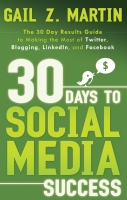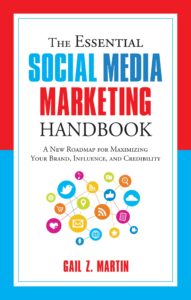By Jana Beeman, CHHP, CHT, AADP
While many office workers get a bit of a break over the holidays (not all, of course, as there is year-end to take care of), those of us with businesses of our own are very busy, juggling the holiday festivities and obligations with closing our year end, evaluating our year, and preparing for the next year. Being in business for yourself has lots of benefits but it also can mean a lot of additional stresses.
So how do we keep our cool over the holidays, while giving our families and our businesses the attention they deserve?
First, take a DEEP BREATH. Center for a moment. Make a list of what you have to get done, when it needs to be done by, and what things can be delegated or wait until January. Remember most of our stress is self-imposed, and we do have the ability to put some things off a week or so. Think about if hiring a virtual assistant for a couple of weeks would help you get everything done with less stress if you’re a solopreneur.
Learn to use the power of the word NO. Ya, I know – we all like to be able to do everything, but really take a step back, think about what you have on your plate, and make a realistic outline of what you can and cannot commit to. If you tell people you simply don’t have the capacity to add another event, obligation, etc. to your schedule until after the first week of January, most will understand. If it’s a personal request, try sending a gift or adding value to what you CAN do later, just to make sure there are no hurt feelings.
Plan your holidays INCLUDING time to relax and do spontaneous things – you NEED that, and taking that time will make the rest of your time much more productive.
Focus on your business and personal goals. Anything that doesn’t lead toward those goals is something to either consider for your scheduled free time or might be worth passing on.
Each morning, take 10 minutes to draft out a to-do list, and put them in order of importance. Look at the bottom 1/3 of the list and see if there is anything there which can either be eliminated or delegated. We all think we have to do things that don’t do anything for our business.
Focus on what you need to work on, giving it 100% of your attention until it’s done. No checking email, answering phones, or anything else until that first item is checked off the list. Multitasking is not productive. Limit checking email to twice a day.
Take frequent breaks to breathe, refocus, and see if you need to shift direction at all. Breathing deeply into the body relaxes both body and mind, allowing us to focus better with less stress.
Lay off the caffeine and sugar. They create a ‘fight or flight’ response in the body, triggering the release of adrenaline and cortisone, creating physical stress in the body. By limiting the caffeine and sugar, you’ll feel better, be more grounded and have much better concentration, so you can get more done with your day.
Improve your quality of sleep to feel more rested and relaxed, again, improving productivity. Don’t eat or drink anything but a little water after 6pm, sleep in a completely dark room or wear an eye cover, don’t work where you sleep, keep the room cool enough so you can snuggle into your blankets. A little melatonin at night can really help you fall asleep faster and stay asleep better. Melatonin is something your body naturally produces that aids with sleep, but many of us don’t produce enough, so taking a good quality supplement of between 2 – 5 mg 30 minutes before bed can be really helpful.
When situations stress you out:
- Breathe…. It’s not the end of the world, no matter what is going on
- Focus on what you CAN control – you can always control yourself. You can control your feelings and reactions, and getting upset doesn’t help anyone
- Look forward to the desired outcome and know the current irritant will pass
- Walk in the other guy’s shoes. I know – we’ve all heard this, but how many of us stop to think that the woman who just stole the great bargain we were about to snag right out from under our nose might have only been able to afford to give that one thing at THAT price? Or maybe it’s for her mother in the hospital? Or maybe she’s got a serious medical condition? Maybe that idiot driver who cut you off just found out his family is in town for a surprise visit, or he just got laid off at work, or maybe he’s just not having a great day. Be compassionate, and on those days when you find yourself swooping that sale item or driving like a doofus, when you realize you weren’t your best self, maybe others will forgive you too. Life is too short to be pissy, if you’ll pardon my French.
I’d also recommend that when you have one of those days when you can’t get your mind off the holidays, all the things you have to do, shopping you need to get done… just make a list, and if you can do some of the shopping or contacting online, take an hour, and get it off your mind. Then schedule time to handle the rest.
At the end of each day, clean your mental slate, knowing you’ve done your best, and tomorrow is another day. Remember we are all human, and we’ll always want to do more than we realistically can, so be gentle with yourself and people you work with, as well as your family.
No matter what your religious beliefs or personal philosophy, be respectful of what others believe, and give yourself permission to treat this time of year as a time to live in grace and compassion. That opens the door for all kinds of cool things to happen J
If you could use some support, visit www.balancedlifetoday.com and sign up for my free special report on 10 Tips to Feel Incredible Now, or, for those of you who suffer from migraines, go to my migraine page at www.balancedlifetoday.com/migraines.htm and download a whole big kit of goodies to help you get through the holidays with less pain, as my gift to you.
| Jana Beeman is a Board Certified Health, Nutrition and Fitness Counselor, certified in Hypnosis, Yoga and Modified Yoga, meditation, EFT and stress relief trainer and a specialist in chronic migraine, food allergies and inflammation, and beating stress and fatigue. AADP Certified. She is a national speaker and telesummits host and is regularly featured on radio programs such as Spirit Radio, Women’s Radio and SQR-fm as well as her own podcasts, newsletters and blog.
Free 30-minute “Find Your Vibrant Life” consults are available on a limited basis. Call (360) 263-5800 or email jana@balancedlifetoday.com.
Facebook: Balanced Life Today Twitter: BalancedLifeTdy LinkedIn: Jana Beeman Read more of her articles her experts page on SelfGrowth.com at https://www.selfgrowth.com/experts/jana_beeman. Permission is granted to reprint this article in its entirety including all contact information. All rights reserved. November 2011.
Disclaimer: This information is not intended to replace a qualified health care professional and is not intended as medical advice. Health care decisions should be made in partnership with a qualified health care professional. The contents of this article are based upon the opinions of Jana Beeman unless otherwise noted. The information provided is for entertainment purposes only and Jana Beeman will not diagnose, treat or cure in any manner whatsoever any disease, condition or other physical or mental ailment of the human body. |
 by Gail Z. Martin excerpted from Fresh Start Success: Reimagine Your Work, Reinvent Your Life, Re-Ignite Your Passion
by Gail Z. Martin excerpted from Fresh Start Success: Reimagine Your Work, Reinvent Your Life, Re-Ignite Your Passion







